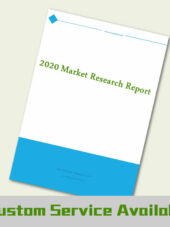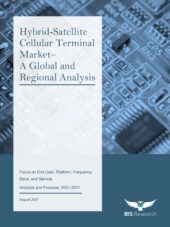Description
Market Report Coverage – Low Temperature Co-Fired Ceramics Market
Market Segmentation
• Application: Consumer Electronics, Automotive Electronics, Aerospace and Military Electronics, Others (Telecommunications, Medical Devices)
• Type: Glass Ceramics (GC), Glass Ceramics Composite (GCC), Glass-Bonded Ceramics (GBC)
Regional Segmentation
• North America: U.S., Canada, and Mexico
• Europe: Germany, France, Italy, Spain, and Rest-of-Europe
• U.K.
• China
• Asia-Pacific and Japan: Japan, South Korea, Singapore, Taiwan, and Rest-of-Asia-Pacific
• Rest-of-the-World: South America and Middle East and Africa
Market Growth Drivers
• Advantages of LTCC over Printed Circuit Boards
• Growing Trend of Miniaturization in the Electronic Industry
• Increasing Demand for Light Emitting Diodes (LEDs) Boosting the Demand for LTCC
• Increasing Acceptance of LTCC Technology in Various End-Use Industries
Market Challenges
• Issues Related to Shrinkage Impacting the Performance of LTCC
• Low Thermal Conductivity of LTCC
Market Opportunities
• Growing Usage of Microelectronics in the Automotive Industry
• Growing Acceptance of 5G Creating Opportunity for LTCC Manufacturers
• Reliability of LTCC in High Electrical Voltage Applications
• Increasing Usage for Micro and Non-Microelectronics Boosting the LTTCC Demand
Key Companies Profiled
Adamant Namiki Precision Jewel Co., Ltd., Api Technologies, DuPont, KOA Corporation, KYOCERA Corporation, Micro Systems Technologies, Murata Manufacturing Co., Ltd., Neo Tech Inc., NIKKO COMPANY, NTK Technologies, TDK Corporation, VIA Electronic GmbH, Yokowo co., ltd., Selmic Oy, Sunlord
How This Report Can Add Value
This report will help with the following objectives:
• A dedicated section focusing on the futuristic trends adopted by the key players operating in the global low temperature co-fired ceramics market
• Extensive competitive benchmarking of top 15 players (including OEMs and component providers) offering a holistic view of the global low temperature co-fired ceramics landscape
• Qualitative and quantitative analysis of low temperature co-fired ceramics at the region and country-level granularity by application and product
Segments
Product/Innovation Strategy: The product segment helps the reader in understanding different types of LTCC (glass ceramics, glass ceramic composites, and glass-bonded ceramics) associated with low temperature co-fired ceramics.
The report also includes a thorough qualitative and quantitative analysis of various application areas such as consumer electronics, automotive electronics, aerospace and military electronics, and others. Additionally, the research also covers regional and country-wise analysis for different applications and types in the low temperature co-fired ceramics market.
Growth/Marketing Strategy: Players operating in the global low temperature co-fired ceramics market are developing innovative products to enhance the capabilities of their product offerings. Growth/marketing strategies will help the readers in understanding the revenue-generating strategies adopted by the players operating in the low temperature co-fired ceramics market.
Key Questions Answered in the Report
• What are the major factors and trends that are impacting the low temperature co-fired ceramics (LTCC) market?
• How has COVID-19 impacted the LTCC market across the globe?
• What are the steps taken by the existing players to improve their market positioning?
• Which are the leading types and applications in the market, and how are they expected to perform in the coming years?
• What is the expected revenue for the global LTCC market from 2021-2031?
• What are the consumption patterns of low temperature co-fired ceramics across different regions and countries?
Low Temperature Co-fired Ceramics Market
Low temperature co-fired ceramics (LTCC) is a multi-layer glass ceramic substrate that is co-fired with low resistance metal conductors at low firing temperature (< 1000?). A typical monolithic structure of LTCC consists of multiple dielectric layers, screen-printed low-loss conductors, resistors and capacitors, and others.
LTCC technology is extremely suitable in a diverse range of applications such as high-volume automotive systems, high-frequency RF, and microwave, wireless and radar products.
The low temperature co-fired ceramics market has been developing significantly since 1980 by Hughes and DuPont for military systems. Since then, LTCC technology has evolved continually and transformed the electro-ceramic industry by developing unique products and systems.
The ecosystem of the low temperature co-fired ceramics market comprises LTCC substrate manufacturers, LTCC package producers, LTCC device processing companies, LTCC module manufacturers, and end users.
Low Temperature Co-Fired Ceramics Market Overview
The global low temperature co-fired ceramics market is expected to reach $8,410.7 million by 2031, with a CAGR of 7.6% during the forecast period 2021-2031. The growth in the market is expected to be driven by consistent technological developments in the electronics industry, such as the miniaturization of electronic devices.
Market Segmentation
Low Temperature Co-Fired Ceramics Market by Application
The growing adoption of LTCC material has been witnessed primarily in automobile electronics due to the incorporation of sensors in various parts of the vehicles, such as engines, power transmissions, and hydraulic braking units.
These sensors are always exposed to high temperatures and harsh operating conditions, which leads to their performance degradation when used over a prolonged period of time. Thus, this necessitates the adoption of LTCC technology for this sector.
Low Temperature Co-Fired Ceramics Market by Type
The growing adoption of GCC-based LTCC systems can be attributed to the wide range of dielectric constant values offered, which provide a broad range of applications. The materials for GCC type of dielectrics for LTCC contain a bit lower glass composition (20-50% volume).
The glass phase helps in the sintering process, while the ceramic phase is responsible for the electrical, mechanical, and thermal properties.
Low Temperature Co-Fired Ceramics Market by Region
China has been leading the market due to increased demand for electronics. The country is well-equipped with an ample amount of market players in each stage of the supply chain and has also been actively investing in new innovations and research and development (R&D).
Key Market Players and Competition Synopsis
Adamant Namiki Precision Jewel Co., Ltd., Api Technologies, DuPont, KOA Corporation, KYOCERA Corporation, Micro Systems Technologies, Murata Manufacturing Co., Ltd., Neo Tech Inc., NIKKO COMPANY, NTK Technologies, TDK Corporation, VIA Electronic GmbH, Yokowo co., ltd., Selmic Oy, Sunlord
The companies that are profiled in the report have been selected based on a selective pool of players, primarily tier-1 (which holds 50-55% of the market), and mid-segment players (comprising 30-35% share), and small and emerging companies (holding the balance 20-25% share), based on various factors such as product portfolio, annual revenues, market penetration, research, and development initiatives, along with a domestic and international presence in the low temperature co-fired ceramics industry.
Related reports:





